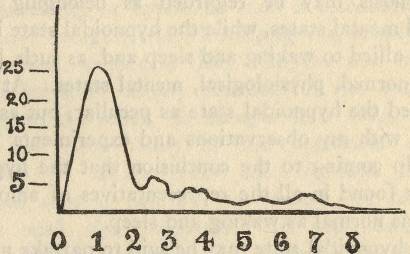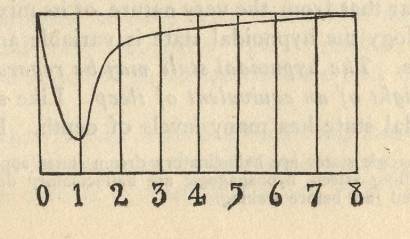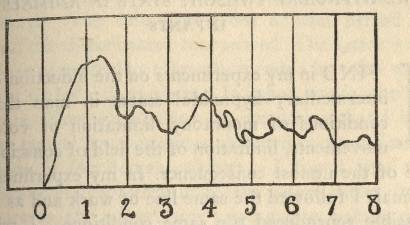
Home Boris Sidis Archives Table of Contents Next Chapter
|
SYMPTOMATOLOGY, PSYCHOGNOSIS, AND DIAGNOSIS OF PSYCHOPATHIC DISEASES Boris Sidis, Ph.D., M.D. Boston: R. Badger, 1914 |
CHAPTER II
THE HYPNOIDAL TWILIGHT STATE
BY the method of hypnoidization we produce a peculiar state which, for the lack of a better term, I designate as "hypnoidal," a twilight state. What is the hypnoidal state? The hypnoidal state is essentially a borderland state. The subject is apparently awake and seems to be in full possession of all his powers, and still he is more closely in touch with the dissociated experiences than he is otherwise in the full waking state. Perhaps the subwaking state would possibly be an apt term for the hypnoidal condition. The subject seems to hover between the conscious and the subconscious, somewhat in the same way as in the half-drowsy condition we hover between wakefulness and sleep.
The hypnoidal state is not a stable condition, it keeps on fluctuating from moment to moment; now falling more deeply into a subconscious condition in which outlived experiences are easily aroused, or again rising to the level of waking states. In such conditions the patient often tells you "something has come . . . , but it is gone." The hypnoidal state has changed, it has become lighter, and the dissociated moments have become again submerged. There is a constant struggle going on in the hunting out of the stray dissociated systems.
The state brought about by hypnoidization is essentially a transient, evanescent, mental disaggregation of the personal consciousness from the reflex subconsciousness. The hypnoidal state borders closely on light hypnosis; and still it is not exactly a hypnotic state and may be regarded as an intermediate state. In a series of experiments on the nature of sleep of lower animals as well as of infants and adults, the facts tend to indicate that the hypnoidal state is intermediary between hypnosis and sleep on the one hand and the waking state on the other.
The hypnoidal state hypnosis.
The close relationship of the hypnoidal state and of hypnosis is sometimes forcibly brought to the attention of the experimenter. Some patients while in the hypnoidal state are observed to become unusually quiet, less talkative, become relaxed, and after a time a distinctly cataleptic condition of the extremities may be observed. The patient has apparently passed into hypnosis. In most of the cases the hypnosis is of brief duration, while in a few cases the hypnosis may become lasting and deep. On the other hand, in many cases the subject falls into a sleeping state without as much as touching on hypnosis.
The hypnoidal state is an intermediary state, intermediate between the waking state, sleep and hypnosis. ‘Subwaking’ may possibly be an appropriate descriptive term of the character of the hypnoidal state. The subwaking, hypnoidal state, like sleep and hypnosis, may be of various depth and duration; it may range from the fully waking consciousness, and again may closely approach and even merge into sleep or hypnosis. The same patient may at various times reach different levels, and hence subconscious experiences which are inaccessible at one time may become revealed at some subsequent time, when the patient happens to go into a deeper level of the hypnoidal state.
On account of the instability of the hypnoidal state and because of the continuous fluctuation and variation of the depth of its level, the subconscious dissociated experiences come up in bits and scraps and often may lack the sense of familiarity and recognition. The patient often loses the train of subconscious associations; there is a constant struggle to maintain this highly unstable hypnoidal state, and one has again and again to return to the same subconscious train started into activity for a brief interval of time. One must pick his way among streams of disturbing associations before the dissociated subconscious experiences can be synthetized into a whole, reproducing representatively the original experience that has given rise to the whole train of symptoms.
The hypnoidal state may sometimes reproduce the original experience which, at first struggling up in a broken, distorted form and finally becoming synthetized, gives rise to a full attack. The symptoms of the malady turn out to be portions, bits and chips of past experiences which have become dissociated, subconscious, giving rise to a disaggregated subconsciousness. The method of hypnoidization and the hypnoidal states induced by it enable us to trace the history and etiology of the symptoms and also to effect a synthesis and a cure.
Any arrangement of external circumstances tending to produce monotony and limitation of voluntary movements brings about a subconscious state of suggestibility in which mental life can be affected with ease. I find that in that subconscious state, consciousness is vaguer than in the waking state, and memory is more diffused, so that experiences apparently forgotten come in bits and scraps to the foreground of consciousness. Emotional excitement becomes calmed, voluntary activity is somewhat passive, and suggestions meet with little resistance. The induced subconscious state is a rest state, a state of physical and mental relaxation. It is a state of rest and relaxation that is specially amenable to psychotherapeutic influences. The important results obtained by me led me to a closer study of what I then thought was a peculiar mental state designated by me as the twilight subwaking, or the hypnoidal state.
The subwaking, or hypnoidal state is essentially an intermediary twilight state belonging apparently to the borderland of mental life. On the one hand, the hypnoidal state closely touches on the waking condition; on the other, it merges into sleep and hypnosis. A close study of the hypnoidal state shows that it differs from the hypnotic state proper and that it can by no means be identified even with light hypnosis. In my years of work on patients and subjects, I have observed the presence of the hypnoidal state before the development of hypnosis and also before the onset of sleep. When again the hypnotic or sleep state passes into waking, the hypnoidal state reappears. The hypnoidal state then may be regarded as an intermediate and transitional state.
A somewhat related state has been long known in psychological literature as the hypnagogic state which precedes the oncome of sleep and is rich in hallucinations known under the term of hypnagogic hallucinations. In coming out of sleep, a closely-related state may be observed, a state which I have termed hypnapagogic. In both states, hypnagogic and hypnapagogic, dream-hallucinations hold sway.
The hypnagogic and hypnapagogic1 states do not belong to light hypnosis, as it can hardly be claimed that men fall into light hypnosis twice or possibly more than that every day of their life. We do not go into light hypnosis with every nap we take. We do, however, go into the hypnoidal state when we pass into sleep or come out of sleep. Every drowsy state has the hypnoidal state as one of its constituents; every sleep state is preceded and followed by the hypnoidal state.
Hypnosis may be regarded as belonging to abnormal mental states, while the hypnoidal state is more closely allied to waking and sleep and, as such, belongs to the normal, physiological, mental states. At first, I regarded the hypnoidal state as peculiar, but as I proceeded with my observations and experiments I could not help coming to the conclusion that the hypnoidal state is found in all the representatives of animal life and is as normal as waking and sleep.
The hypnoidal state may be said to partake not only of the nature of waking and sleep, but also to possess some characteristics of hypnosis, namely, suggestibility. It is clear that from the very nature of its mixed symptomatology the hypnoidal state is variable and highly unstable. The hypnoidal state may be regarded more in the light of an equivalent of sleep. Like sleep, the hypnoidal state has many levels of depth. It differs, however, from sleep in the rapidity of oscillation from level to level.
In the experiments of various investigators, the depth of sleep is found to be represented by a rapidly rising curve during the first couple of hours and by a gradually descending curve during the rest of the hours of sleep.
Michelson measured the depth of sleep by the intensity of sound stimuli that can awaken the sleeper. The stimulus was the fall of a ball of a definite mass through a definite distance. Plotting the hours of sleep on the abscissa and the sound stimuli in thousands of grammocentimeters, he finds the curve of sleep falls rapidly after the first hour.

Kohlschütter, who also worked with sound stimuli, represents the sleep curve as follows:

Sante de Sanctis and Nevroz worked with the aesthesiometer on the senses of touch and pressure; they found that the sleep curve should be represented as follows:

No such regularity of curve can be found in the hypnoidal state. The depth of the hypnoidal state changes very rapidly, and with it the passive condition and suggestibility of the patient.
________
1. Hypnagogic states are hallucinatory dream states appearing just before falling asleep, hypnapagogic are hallucinatory dream states experienced just before waking.